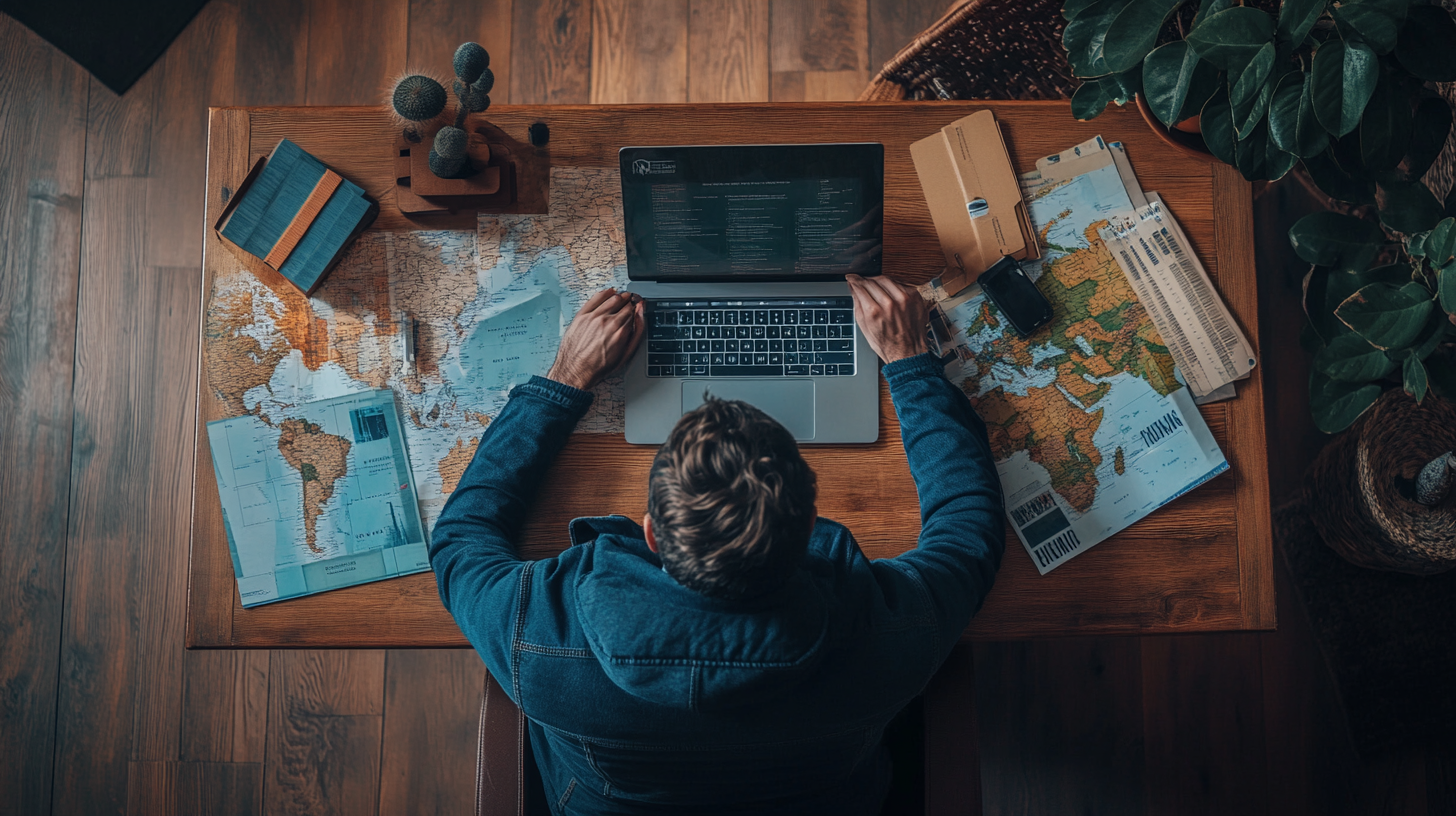6 Steps to a Smoother Business Trip
I believe every business trip should feel purposeful and under control, even in a world where each detail can shift in a blink. Over the years, I’ve observed that the key to a stress-free journey lies in understanding your priorities, preparing for the unexpected, and embracing the right tools. Here are the six steps I rely on to stay focused and on top of every itinerary.
Step 1: Clarify Your Travel Objectives

Before I book a single flight or reserve a hotel, I make sure I’m crystal clear on why I’m traveling. Am I presenting a sales pitch to a prospective client, attending a multi-day conference, or checking in on an overseas branch? Centering each trip around a well-defined goal keeps me from overcommitting or missing the critical milestones I need to reach. According to a 2024 Global Business Travel Association report, travelers who define specific trip objectives also report higher productivity and better time management.
Let’s be honest: it’s easy to get swept up in the excitement of an upcoming journey and forget to confirm meeting times or double-check the tech requirements for your big presentation. By confirming the purpose of each stop—who I’m meeting, what materials I need, and the exact outcomes I’m aiming for—I keep calm under pressure and ensure no crucial detail slips past me. I once observed a colleague who arrived at a major conference with no clear objective, only to discover halfway through that he was missing essential documentation. That experience taught me how just a few minutes of planning can save days’ worth of trouble down the line.
To wrap up this step, I usually compile a short list of the top goals for every trip. Whether it’s signing a contract, demoing a product, or even just building rapport with potential partners, having a target keeps me focused and makes my post-trip evaluations far more tangible.
Step 2: Establish Your Budget

Once I’ve nailed down my objectives, I turn to the numbers. From airfare to lodging, meals, and in-transit tasks, a realistic budget is my compass to avoid overspending. A recent Deloitte survey in 2025 indicated that business travel costs continue to rise due to increasing airfares and tight staffing across the hospitality sector. That means planning ahead isn’t just smart—it’s practically mandatory.
I like to reference my company’s travel policy side by side with current industry rates. If you manage travel for a small start-up or you’re a lone consultant, you might need to establish your own guidelines. For instance, I look at the average costs of hotels near my meeting location and set daily allowances for meals and transport. Having a figure in mind encourages mindful spending; it also gives me proof points if I need to negotiate for more resources with my finance team.
An effective cost management plan also includes identifying cost-friendly perks. Early-bird flights are typically cheaper, and booking them can yield significant savings. Combining these tactics with frequent flyer points from my corporate program is the icing on the cake, as they eventually pay me back in upgrades or premium services.
Step 3: Book Early and Follow Policies

Booking flights as soon as I confirm my trip dates not only helps me secure better seat selections, it usually leads to better deals. I’ve noticed that airfare can spike dramatically the closer you get to your departure date, which is why time is of the essence. According to industry data from Hopper, flight ticket prices can increase by as much as 20% within two weeks of departure, especially for popular routes.
I also find that adhering to corporate policies early on saves me from potential headaches later. For instance, using a single online booking tool that’s synced with company guidelines ensures no one has to chase me for out-of-policy bookings. I’ve watched colleagues scramble to justify a slightly higher fare or an off-policy hotel, and it can bring unnecessary stress while you’re on the move. Instead, I rely on streamlined booking platforms that automatically cross-check my reservations with the approved criteria—including price caps and preferred airlines—to keep everything straightforward and transparent.
As a final note on booking, I also scope out accommodations near meeting venues whenever I can. Staying closer to the action cuts down on transit time, allowing me to use those extra minutes to prep slides, catch up on emails, or grab a quick bite without dashing across the city.
Step 4: Create a Detailed Itinerary

I find it particularly reassuring to have all my scheduling details compiled into one master itinerary. This itinerary is my security blanket, complete with flight numbers, departure gates, hotel contact info, and even a few restaurant options I can slip into if I have a gap between meetings. Single-platform travel apps like TripIt or SAP Concur have been lifesavers for me, automatically organizing everything into a neat timeline.
One time my flight got delayed for hours, and thanks to my updated itinerary on my device, I managed to alert my contacts, reschedule my ground transportation, and shift a lunch meeting seamlessly. That’s when I realized that a good itinerary isn’t just about scheduling; it’s about staying flexible and proactive in real-time. The fewer surprises I have to juggle, the more composure I can maintain in front of clients or colleagues.
If you’re not a fan of digital tools, a simple spreadsheet works wonders, too. The main thing is to keep all the details accessible and up to date. I personally appreciate the extra security of having it stored in the cloud, so I never lose my itinerary if I misplace my device en route.
Step 5: Embrace Tech Tools

In an age of hyper-connectivity, I can’t imagine traveling without a solid lineup of tech tools by my side. From robust expense apps that keep track of receipts and mileage to calendar integrations that automatically block off flight times, technology lightens the mental load significantly. I’ve observed that businesses using comprehensive travel management platforms reduce administrative tasks by up to 40%, allowing employees to focus on the core reason they’re traveling in the first place.
Additionally, virtual assistants can check gate changes, and local navigation apps guide me through unfamiliar public transit systems. No more fumbling with paper maps or worrying about hidden taxi fees. Even flight comparison sites, like Google Flights, have saved me countless hours by pinpointing the best times to fly and highlighting cost overlaps. For me, these tools don’t just help me stay under budget; they also alleviate the stress of handling details on the fly—pun intended.
Finally, communicating with your home office or managers is essential. I usually share a travel calendar so everyone back at headquarters knows exactly where I am and when. That way, I avoid double-booking or late-night calls at unexpected times, and I can quickly troubleshoot if an unexpected situation arises.
Step 6: Prepare for Surprises

No matter how carefully I plan, I know there’s always room for the unexpected. Bad weather, traffic jams, sudden schedule changes—these can unravel even the most meticulously organized trip. That’s why I recommend building in backup strategies. Purchasing travel insurance, having alternative flight options noted, and staying updated on local advisories are a few ways I shield myself from undue stress.
A colleague once shared how missing a connecting flight in a foreign country led to a complete reworking of project timelines. Through that experience, she and I both learned the value of having contingency budgets, emergency contacts, and robust vendor relationships to help pivot quickly when something goes sideways. If I’m heading to a region with unique cultural or business norms—or if a visa is needed—I make sure to do my homework well in advance, consulting official travel sites for the latest requirements.
These proactive measures often transform a potential crisis into a manageable detour. Being ready for hiccups doesn’t mean you’re pessimistic; it means you’re practical and keep productivity in focus, no matter what curveball comes your way.
The Bottom Line

Business travel needn’t be daunting if you map it out with clarity and purpose. Keeping your budget in check while you multitask and adapt on the go is all about merging personal goals with corporate guidelines. Doing this well, in my view, is the hallmark of an organized and efficient traveler.
When I think of success, I picture landing in a new place fully prepped for the meetings ahead, confident that if the journey throws me a twist, I’ll have the wherewithal to handle it. By clarifying objectives, setting a realistic budget, booking early, assembling a robust itinerary, making the most of tech, and staying ready for the unexpected, we can all become more strategic travelers, ready for whatever the runway has in store.
Final Thoughts
Traveling for business is an art that fuses good planning, solid financial sense, and a willingness to pivot when the atmosphere shifts. I’ve found that consistency in following these steps—whether I’m flying solo or coordinating with a larger team—helps me maximize every mile I travel and minimizes downtime.
In a world that’s busier than ever, we need clear priorities. By focusing on our objectives and equipping ourselves with the best resources, we can transform business travel from a logistical challenge into a strategic advantage.
Vanessa Bloome’s Take
It seems to me that business travel will remain essential, even as virtual meetings evolve. After all, there’s something uniquely powerful about face-to-face connections and experiencing different places firsthand. That said, blending cutting-edge technology with your own savvy instincts ensures that each trip works for you, not against you.
In my own journey, I’ve discovered that the perfect balance of pre-trip prep and on-the-ground resourcefulness can take you far. And by actively refining these tactics over time, you’re setting yourself up for smoother flights and more meaningful meetings ahead.
milesBUZZ is your source for more entertaining travel insights and updates.







